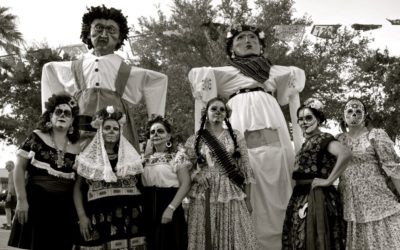Crispulo Atillo is a Grandmaster of eskrima, a non-aggressive, weapons-based martial art rooted in Filipino history and culture. Great Grandmaster Atillo began studying eskrima as a teenager with his father and with Great Grandmaster Teodoro Saavedra. He was a master artist in ACTA’s Apprenticeship Program in 2006 with apprentice, Red Dagum. *** From…
The Dorothy Ramon Learning Center is dedicated to the documentation and sharing of Southern California’s First Peoples’ cultures, languages, history, music, and other traditional arts. The Center offers cultural activities and programs, supports research, preservation, and documentation with scholarly and accurate multimedia through its Ushkana Press…
In the Northwestern area of the state of Michoacán resides an indigenous group known as the Tarascos, who are also referred to as Purépecha, pertaining to the language spoken by this group. The Purépecha people have been successful in retaining a variety of cultural expressions in addition to the language.
Domitilia Clemente was born and raised in the small town of Ocumichu, Michoacán, Mexico. As a child, she began helping her mother in the kitchen, preparing numerous traditional dishes to celebrate special occasions such as the celebrations of saints (Fiesta de San Pedro, Cristo Rey, Virgen de Guadalupe), as well…
The tradition of backstrap weaving is very popular in many towns in Oaxaca, Mexico. Practiced and taught through generations of women, weaving on a backstrap loom is used to make shawls, napkins, belts, and other items needed for daily life and traditional clothing. In her hometown of San Juan Mixtepec…
The qeej (a multiple pipe bamboo mouth organ, pronounced kheng) is the quintessential Hmong instrument. Used in ritual practices, the qeej replicates the tones and vowel sounds of the Hmong language and the qeej player uses his instrument to communicate with the spirit world. Ritual movements accompany the music; your…
About the Organization Raices Cultura’s mission is to create a space for artistic and cultural expression, to promote healthy communities, and to strengthen the voice of the Eastern Coachella Valley. Since 2005, in an effort to build community through the traditional arts, Raices has held an annual…
Día de los Muertos (Day of the Dead) is a Mexican celebration with indigenous and Catholic roots. Observed on November 1 and 2 each year, the holiday honors deceased friends and family. Traditions connected with the holiday include building private altars (ofrendas) honoring the deceased using sugar skulls, marigolds, and…
White Hmong qeej
Cahuilla Bird Singing


